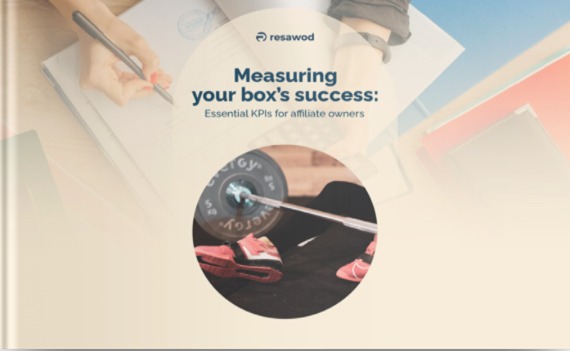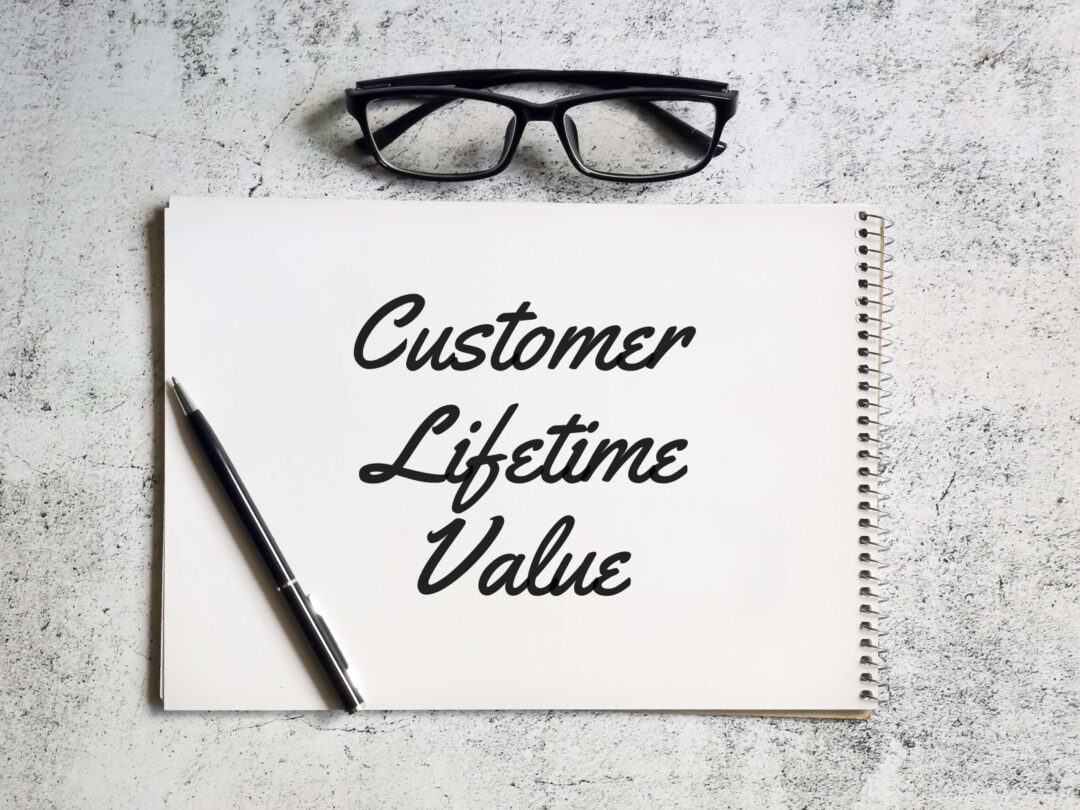What is CLV?
The metric that describes how much benefit a user brings to your gym over the entire time they are enrolled.
Calculating the Lifetime value of the clients in your box is a simple process, but it requires a lot of attention. Below, we will explain the data you will need to obtain before calculating the lifetime value of your gym’s customers.
1- Average purchase value
That is, the average economic value of the memberships that your users have in your gym, based on your bonuses and memberships. To extract this number, the easiest way is to add up all the revenue for a given period and divide it by the number of customers. This way you will know how much your customers spend on average in your gym.
Let’s look at an example of how to calculate this value over a period of one month:
100 customers – monthly subscription – 35,90€ per month
300 customers – quarterly subscription €90 – €30 per month
250 customers – annual subscription 300€ – 25€ per month
We multiply total revenue:
100 customers x 35,90 = 3590
300 customers x 30 = 9000
250 x 25€ = 6250
Add up each revenue: 3590 + 9000 + 6250 = 18840€.
We divide the income by the customers. 18840/650 = 28,98€
The average revenue per customer in a month is 28,98€.
2- Recurrence rate
This rate refers to the frequency of payments made by users. Most of the users of your gym will have one payment per month, so this is a very simple calculation, and the result is 1.
3- Customer value
Once you have extracted how much the user spends, and how many times they spend, you will have before you the value of each of your customers. Following the example that we have been describing here, just multiply step 1 X step 2.
That is; 28,98€x1= 28,98€.
4- Average customer lifetime
To extract this metric, you must know how long your users remain registered in your sports centre and take the average. You should therefore calculate how long those who have been registered and how long those who have unsubscribed have been registered, and divide by the number of members to get the average.
In the total, you should get the months. We will take 24 months as the average duration.
5- Lifetime value of your customers
To finally extract the metric we are most interested in, you will have to make this calculation.
CLTV = average customer value X average lifetime value
CLTV= £28.98 X 25 = 724.5
In other words, for every user who joins your gym, your average profit is 724.5. With some you will earn more, with others less. Some will stay less than 25 months, others more. And some will have a higher subscription amount, others less. But the result that interests you is the average income that a user brings you.
What are the benefits of knowing the CLTV o Lifetime Value of your gym’s clients?
As you have seen, extracting this metric is very simple, but it is necessary to pay attention to several aspects. Along the way, we extract other data that can help us and give us a good overview of our gym, but what is the importance of the final metric, the CLTV of your gym? Here are the 4 key benefits:
1- You increase your gym’s revenue
The longer the lifecycle of a user, the more revenue you get. Therefore, monitoring and improving CLTV is essential for your gym.
In the process of performing the CLTV formula, you will be able to see how many subscriptions of each type there are in your gym, as well as the average customer lifetime, where you will be able to detect failures and where you should invest more efforts.
The CLV identifies the specific users who bring in the most revenue. On the other hand, it gives you specific data on the loyalty of your gym. This gives you the possibility to design a specific loyalty strategy for them, and as a result, they will feel more comfortable in the gym and spend more. And you will gain more customer lifetime, and therefore, your CLTV will be higher.
2- You identify the problems to boost user loyalty and retention in your gym
If you make it a priority to review your CLTV, you will be able to identify any worrying trends and come up with strategies to address them.
For example, if you find that the CLV is consistently low, or you detect that a particular moment has suffered a dip from which it has not recovered, you can work to optimise your customer service strategy or a loyalty programme to better meet their needs.
3- It helps you to target the ideal users for your gym
When you know the value of a customer and analyse their profile, you know what type of users are of interest to your gym and which are not. Yes, they are all new customers, but it’s better if you get one that doesn’t drop out after 3 months, right?
Knowing this, you can develop a user acquisition strategy that targets those who will spend the most in your gym.
*If you want to know more about how to attract customers to your box, take a look at this article: 5 ideas to attract new gym members
4- You reduce user acquisition costs
Acquiring new customers can be costly. As a recent article in The European Business Review points out, acquisition is often five times more expensive than retention.
Furthermore, another study by Bain & Company concluded that a 5% increase in retention rate can lead to an increase in profits of between 25% and 95%.
These statistics show that it is essential that you identify and nurture the most valuable users, those who interact with your gym. By doing so, you will achieve higher profit margins, increase user lifetime value and reduce acquisition costs.
Want to learn how to make a good KPIs analysis of oyur box?
Download our ebook

Steps to improve CLV in your gym
1- Optimise your gym on boarding process
This is “simply” about getting your new members up to speed with your brand: what you do, why it’s important and why they should stay.
Onboarding happens in the first few days after members sign up. When they go to their first targeted class at the centre, go for a tour of the machine room, or when they contact you, they are learning how your gym works and what you can offer them.
The result? You have to stand out and make it simple. Use the data users have given you to get to know them a little better and find out what their profile is. Then follow up and keep in touch with them to build a relationship of trust and confidence in you.
Optimised onboarding processes work because they establish a framework for long-term user relationships that help increase CLV.
2- Build lasting relationships in your gym
As mentioned earlier, long-term member relationships are built on trust.
If members believe that your gym offers them the best experience and the services they want or need, they will come back. But this is just the beginning. With social media now a fundamental part of our lives, members want more than a business-based relationship – they want a personal connection that makes them feel more than just a gym membership.
If users feel that your gym offers them the best experience and the services they want or need, they will come back. But this is just the beginning. Now that social media is a fundamental part of our lives, users want more than a business-based relationship – they want a personal connection that makes them feel more than just a gym membership.
Therefore, it is essential to interact with users on social networks such as Instagram, Tik Tok or Facebook. For example, your trainers could make videos on a topic that interests users, or you could do some research to find out more about your users and then send them a (small) gift.
This works because you have to stand out from the crowd. In the world of fitness and gyms there are thousands of options. If you manage to establish a real connection with your users, you’ve won the game.
*If you want to know more about how to connect with your users, you may be interested in this article: 5 keys to customer experience applied to a crosstraining box.
3- Take good advice
Sometimes it’s better to listen than to talk. Users are the ones who know best how your customer service works, the work and interest of the trainers, the quality of the classes you run… And this kind of information, even if they are complaints, is the key to everything.
Too many brands take the position that they know what their customers want better than the customers themselves, which is a textbook mistake. If you spend enough time listening and responding to your users, you achieve two things: you increase loyalty and, consequently, lifetime value. Even if sometimes you have to listen to things you shouldn’t, do it. It is worth it.
For example, you can create a survey about ideas for sports equipment or services they would like to have. Make sure you don’t lock them into a specific set of options; give them room to add their own ideas and make them feel like their opinion counts.
While not all customers will participate, those who do will not only help you improve the service you provide at your gym, but are also likely to become some of your most loyal users.
Resawod tip: give credit where credit is due. If a user has a good idea, thank them for their help and consider sending them something as a token of appreciation. This shows that you are willing to listen and that their opinion is important to you.
4- Facilitate communication with your gym users
Users are not going to wait for your gym to connect with them or answer their questions. A recent survey shows that 88% of customers want a response to emails within an hour or less. Although this is not always possible, knowing this you can develop a strategy to shorten response times as much as possible and improve your communication with users.
Having a presence on social media is the best possible strategy. With them you and your team have the necessary tools to encourage the relationship with users to go further.
Making your users feel part of a community that listens to them, shares their interests and responds to all their doubts and questions is the best loyalty strategy in the background that exists.




